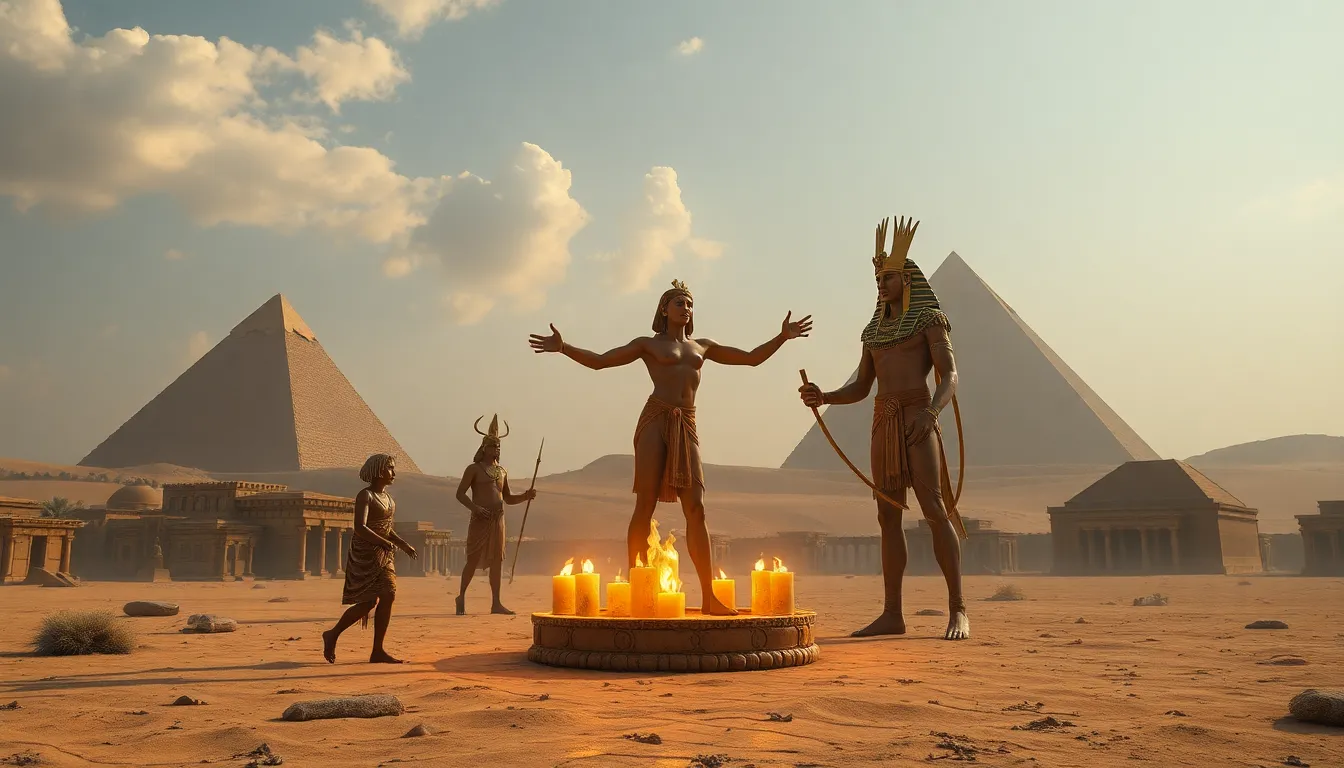The Connection Between Egyptian Mythology and Sacred Rituals
I. Introduction
Egyptian mythology is a rich tapestry of stories that explain the cosmos, human existence, and the divine. The ancient Egyptians created an intricate belief system that encompassed gods, goddesses, and mythical creatures, each playing a vital role in the understanding of life and death. This mythology was not merely theoretical; it was deeply intertwined with the sacred rituals that permeated their society.
The significance of sacred rituals in ancient Egyptian culture cannot be overstated. They were seen as essential practices that connected the people to the divine and ensured harmony within their world. This article explores the interrelationship between Egyptian mythology and sacred rituals, revealing how these elements coalesced to create a unique cultural identity.
II. The Role of Deities in Egyptian Mythology
The pantheon of Egyptian deities is vast, with each god and goddess embodying specific attributes and responsibilities. Key deities include:
- Osiris: God of the afterlife and resurrection.
- Isis: Goddess of magic and motherhood, protector of the pharaoh.
- Ra: Sun god, symbolizing creation and order.
These deities played significant roles in the daily lives of the ancient Egyptians. Osiris, for instance, was central to the beliefs surrounding death and rebirth, influencing funerary practices. Ra’s daily journey across the sky was believed to ensure the cycle of day and night, prompting rituals that honored his role in creation.
The influence of these deities on sacred rituals was profound. Rituals were often performed to appease them, request blessings, or seek protection from misfortune.
III. Sacred Texts and Myths
Important sacred texts like the Pyramid Texts and the Book of the Dead provide insight into Egyptian mythology and its rituals. The Pyramid Texts, dating back to the Old Kingdom, are among the oldest religious writings in the world, containing spells and incantations intended to guide the deceased through the afterlife.
Myths narrating the creation of the cosmos and the adventures of gods not only serve as entertainment but also as moral and ethical guides. The story of Osiris’s death and resurrection, for example, underscores themes of sacrifice and redemption, directly influencing the rituals surrounding death and burial.
The relationship between mythological narratives and ritual practices is evident; these stories provided the framework for rituals, giving them purpose and significance.
IV. Rituals of Death and the Afterlife
Funerary rituals were of paramount importance in ancient Egypt, particularly in relation to the myth of Osiris. The belief in an afterlife shaped their views on death, prompting elaborate burial practices. These rituals ensured that the deceased would be judged by Osiris and granted access to the afterlife.
Key components of these funerary rituals included:
- Mummification: Preserving the body for the afterlife.
- Tomb offerings: Items placed in the tomb to aid the deceased on their journey.
- Judgment of the Dead: The weighing of the heart against the feather of Ma’at to determine the soul’s fate.
These rituals were designed to ensure a safe passage to the afterlife, reflecting the deep-seated belief in the continuation of existence beyond death.
V. Seasonal and Agricultural Rituals
The connection between mythology and agricultural cycles was crucial for the ancient Egyptians, particularly in relation to the flooding of the Nile, which was tied to the god Hapi. The inundation was essential for farming, and various rituals were performed to honor the gods and ensure a bountiful harvest.
Key rituals included:
- Wepet-Renpet: The New Year festival marking the start of the Nile’s flooding.
- Rituals of planting and harvest: Offerings made to deities like Osiris for fertility and abundance.
These seasonal celebrations were steeped in mythological context, reinforcing the cyclical nature of life and the importance of the gods in agricultural success.
VI. Healing and Protective Rituals
Health and well-being in ancient Egypt were closely linked to the divine. Deities such as Sekhmet, the goddess of healing, and Thoth, the god of wisdom, played vital roles in health-related rituals. People turned to these deities for protection from diseases and misfortune.
Healing rituals often included:
- Prayers and offerings: Invoking the deities for assistance.
- Amulets: Objects believed to provide protection and healing.
- Incantations: Spells recited to invoke divine aid.
Mythological stories, such as those of Sekhmet’s healing powers, influenced these practices, highlighting the belief in the divine’s direct involvement in human health.
VII. Festivals and Public Ceremonies
Major festivals like Opet and Khoiak were significant events in ancient Egyptian culture, celebrating deities and the agricultural cycle. These festivals were often marked by processions, offerings, and communal feasting, emphasizing the collective nature of worship.
Themes and activities of these festivals were deeply rooted in mythology:
- Opet Festival: A celebration of fertility and the annual flooding of the Nile.
- Khoiak Festival: Honoring Osiris and the resurrection theme.
Community involvement in these events reinforced cultural identity and collective memory, binding individuals to their shared beliefs and practices.
VIII. Conclusion
The interconnectedness of mythology and rituals in ancient Egyptian culture is profound. Myths provided the narratives that shaped the rituals, while rituals brought the myths to life, creating a dynamic interplay between belief and practice.
The lasting impact of Egyptian mythology is evident in contemporary practices and beliefs, as many themes resonate through various cultures today. Understanding this connection is essential for appreciating the historical context of ancient Egyptian civilization and its enduring legacy.




